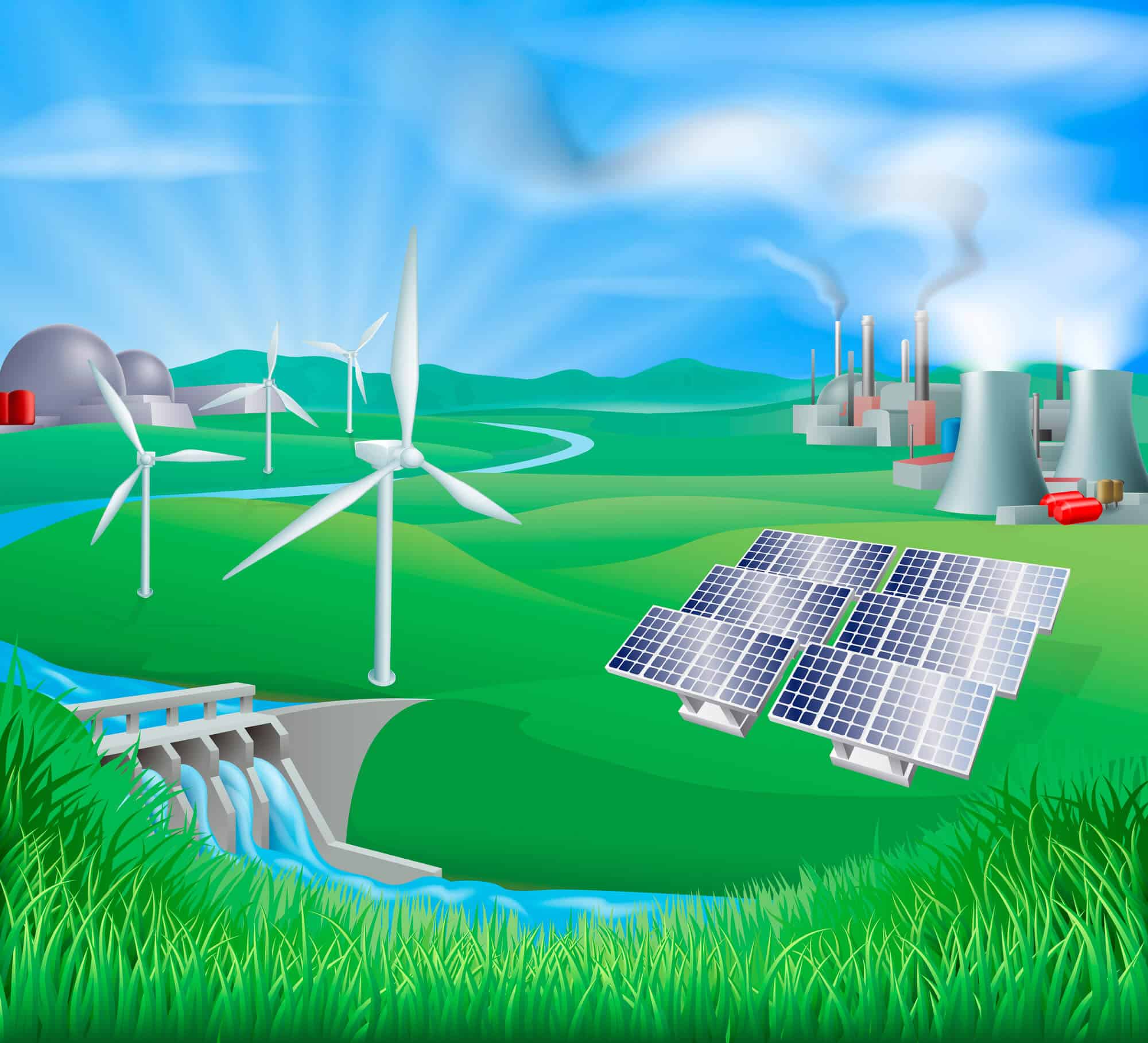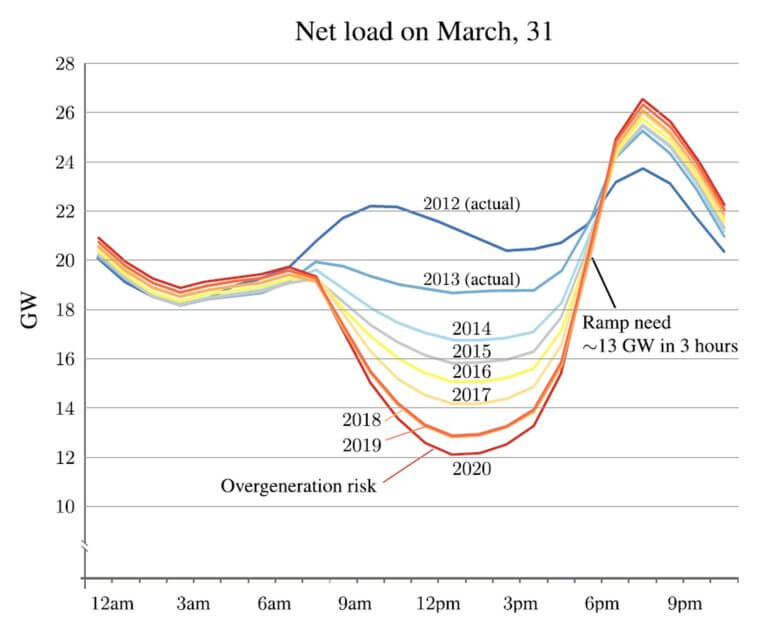Innovative methods of optimization, which make it possible to "smooth out" the fluctuations in the production of renewable energy by shifting the load in the network according to consumption. Said energy is stored during hours of low consumption, and when needed electric power is "injected" into the grid

Replacing the polluting energy sources with green and renewable energy that comes from the wind, the sun, the sea and so on is a worldwide challenge that engages governments, organizations, scientists and engineers. The ambition: developing sustainable solutions for the ever-increasing energy consumption.
so whats the problem? If this is such a necessary and necessary change, why is it not progressing faster? Are these only matters in legislation and regulation?
The answer, according to master's student Noa Zargari of the Technion, is negative. Zargari, who is researching the subject under the guidance of Prof. Yoash LeBron from the Viterbi Faculty of Electrical and Computer Engineering, explains. "There is no doubt that legislation and regulation are essential to support significant changes in electricity production processes, but apart from them there are also very complex technological challenges in the integration of renewable sources in the electricity network. One of the problems with renewable energy sources is their instability - Solar radiation, for example, changes during the day and resets at night. The changes in the wind are even less predictable, in most places. If in traditional energy production, which relies on burning fossil fuels such as oil, the power is produced from a controlled source, then renewable sources are characterized by a volatile nature and the power they supply to the grid is not constant and predictable to a limited extent. All this affects a central principle in electricity supply: Balance between production and consumption. "
The aforementioned balance means that electricity production should match consumption at any given moment. Thus, if the approximate consumption at any given moment is known, the traditional power plants adjust themselves so that they provide the same required electric power. Renewable sources are not subject to such precise control. Furthermore, since they currently provide only part of the demand in the electricity grids, it is essential to integrate them into these grids together with the traditional energy sources.
Such a hybrid setup, which combines the two types of sources, may encounter two problems when the balance between production and consumption is not met: one, when the consumption is too high to rely on renewable sources alone, and a massive and immediate activation of conventional generators is required; And the other, when the consumption is much lower than the combined power of the energy sources, then there is a danger of excess production, excess electric power over time will harm all the operating components, the transportation and the infrastructure.
The interactions between the two types of energy sources lead to a production curve known as the "duck curve" due to its shape **. This curve describes the changes in energy consumption during the day. Household electricity consumption, for example, is relatively low in the afternoon but rises sharply in the evening. When the response to this change is summed up in increasing conventional production, a heavy load is created on the traditional power plant, and this load is accompanied by abnormal costs and increased emission of pollutants. This is one of the main obstacles in the implementation of renewable energy sources.

One of the simple solutions to the situation of excess power from renewable sources, which as mentioned threatens the integrity of the electricity grid, is cutting off the supplier, which means a deliberate reduction of power from renewable sources. This solution is obviously not desirable, as it reduces the share of renewable energy in the total energy produced and leaves the use of polluting energy sources unchanged.
so what are we doing? The seemingly simple solution is to store the excess renewable energy during off-peak hours for use during peak hours. However, large-scale energy storage is not simple either economically or environmentally.
This is where innovative methods of optimization come into the picture, which make it possible to "smooth out" the fluctuations in the production of renewable energy by shifting the load in the network according to consumption. Said energy is stored during hours of low consumption, and when needed electric power is "injected" into the grid.
One of the well-known and effective optimization tools is Dynamic programming. Its disadvantage is the computational difficulty involved in its application in multivariable systems. The Technion researchers developed an optimal control method based on dynamic programming, which was specially designed to achieve good performance, When considering the production rate limit. The main idea in the developed algorithm is to limit the number of calculations by a continuous "sieving process", which limits the number of energy values relevant to the scan. These chosen values are leveraged by standard dynamic programming, and the resulting solution is guaranteed to be optimal, if it exists.
In the current study, the Israeli network was chosen to demonstrate this idea. According to Zargari, "We evaluated the production curve for the year 2030 based on the goals of the Ministry of Energy: production of 17% of energy based on renewable sources and an annual increase of 2.7% in energy consumption. The assessment of energy reserves is based on existing reserves in Israel and reserves planned to be built to support the integration of renewable sources. The simulations show that the use of energy reserves will increase the flexibility of conventional means of production, which will make it possible to integrate a larger scale of renewable energy into the network."
In the graph: the duck curve on March 31 in different years. It is possible to see both the volatility at the hourly level (decrease in consumption at noon and a steep increase in the evening) and the extremes of this fluctuation over the years - in 2020 it can be seen that the drop in consumption at noon led to the danger of overproduction, while the increase in consumption in the evening necessitates an increase in electricity production in the conventional way.
The above research was conducted by Noa Zargari, a graduate of the Faculty of Electrical Engineering, as part of her thesis. The research was conducted in collaboration with some members of the research group under the guidance of Prof. Yoash Lebron, and it was published in the scientific journal IEEE Transactions on Control Systems Technology (TCST)
